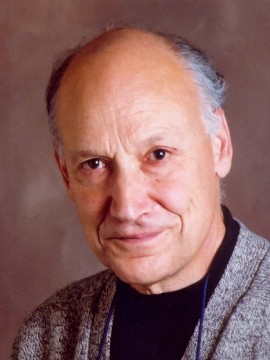The Department of Geography and Planning mourns the passing of Richard Colebrook “Cole” Harris (1936-2022), a professor in the department from 1964-1971, and a towering figure in historical geography, particularly the study of settler colonialism in Canada.
Harris received his PhD in 1964 from the University of Wisconsin, where Andrew Clark supervised Harris’s dissertation – published in 1966 as The Seigneurial System in Early Canada: A Geographical Study. (Three more Wisconsin PhD students, all historical geographers, followed Harris to U of T: James Lemon, Thomas McIlwraith, and Aidan McQuillan.) From the start of his time in Toronto, Harris recognized that the department had become a leader of what his colleague Ian Burton called the discipline’s “quantitative movement.” By 1970, Harris had crafted his response: what would become “Theory and Synthesis in Historical Geography,” printed in The Canadian Geographer in 1971.

The paper was initially presented at a department colloquium in the spring of 1970. Denis Cosgrove, a U of T MA student at the time, recalled “the tension of the event in that basement room of Sidney Smith Hall.” The paper, he added, represented “a marker put down for reclaiming human geography’s place among the humanities.”
Whatever the mythology surrounding the event, Harris’s paper was a crucial manifestation, at U of T and beyond, of what became known as humanistic geography. As he reflected, the feeling, at least, was “that the future of academic geography in North America was being thrashed out in the department.”
But in the year his paper appeared in print, Harris left Toronto and returned to the University of British Columbia, where he had been an undergraduate in the city of his birth. His subsequent career was one of great distinction, including the first volume of the landmark Historical Atlas of Canada (1987, and produced in collaboration with the University of Toronto cartographer Geoffrey Matthews and many collaborators in Toronto and beyond).
Perhaps his most lasting contribution, though, is a series of papers and books on colonialism and dispossession, focused on British Columbia. As a settler scholar with familial roots in BC’s Slocan Valley (movingly discussed in his Ranch in the Slocan, 2018), he was never unaware of his own connections to these vast and violent processes – processes perhaps most acutely explored in his widely-cited 2004 article, “How Did Colonialism Dispossess?” Harris’s research and writing in the 1990s and 2000s inspired numerous scholars to further consider the geographies of settler colonialism, and – sometimes quite differently, and more substantially – to place these accounts in conversation with Indigenous authors and sources.
Harris was a marvelous teacher and mentor, exacting and compassionate in equal measure. His time at U of T seems distant, but from the 1960s onward, the historical geography of the “bounded land” he called Canada is unimaginable without him.


